- 한국어
- English
- 日本語
- 中文
- العربية
- Español
- Français
- Deutsch
- Pусский
- Tiếng Việt
- Indonesian
by Honorary Reporter Danielle Tartaruga from France
Photo = Andrea Valtriani, Claire Davey
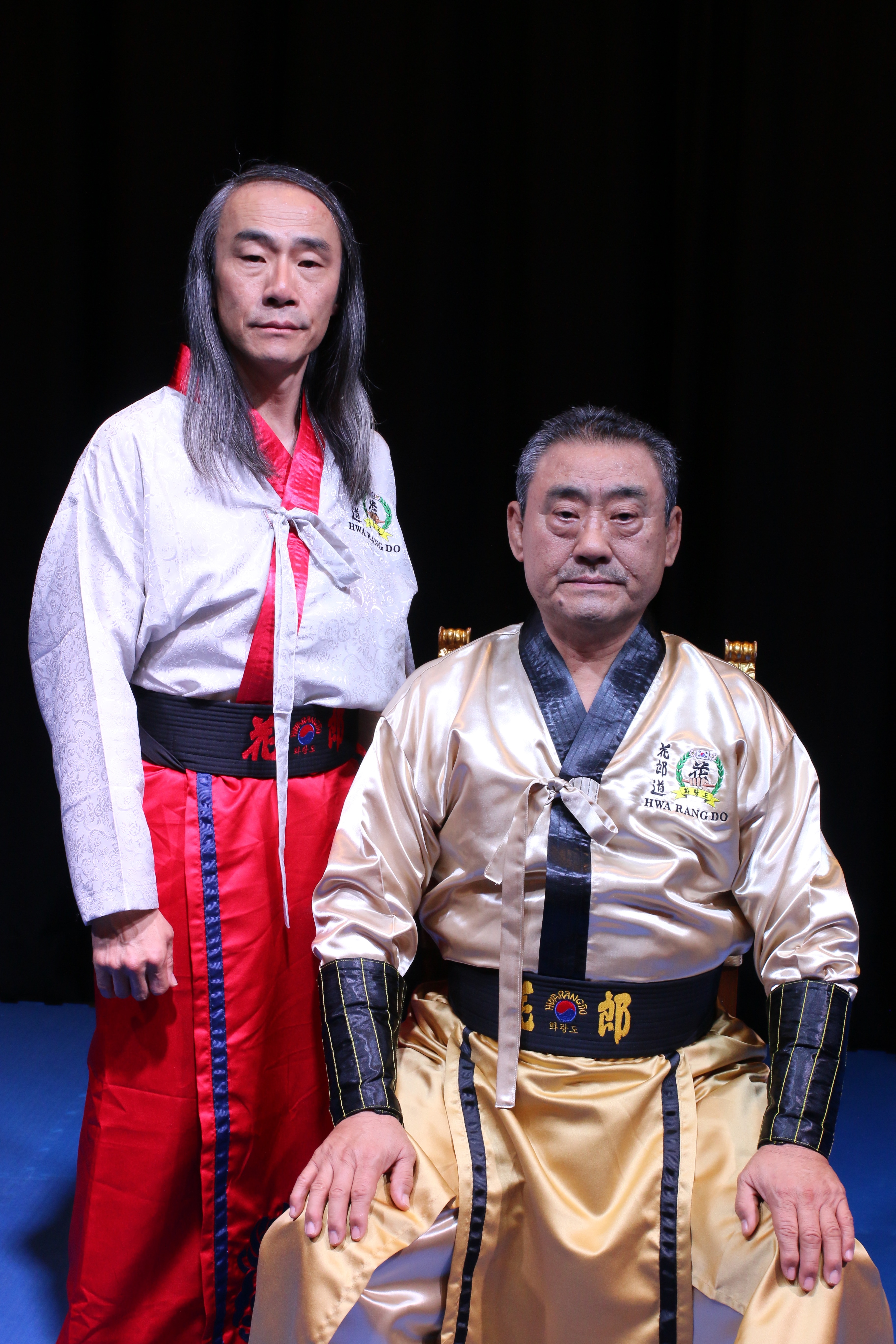
Hwarangdo's highest-ranking grandmaster, Lee Joo-bang (right), is the founder of the World Hwa Rang Do Association (WHRDA), and his eldest son Lee Tae-joon is also a grandmaster as well as the heir apparent to his father. (Andrea Valtriani)
What is the origin of hwarangdo?
Hwarangdo is a traditional Korean martial art and healing method developed during the Silla Dynasty (668–935) during the Three Kingdoms Period. The name is translated as "flower of youth," or more specifically "the way of the flowering knights." The hwarang were young men ranging in age from 13-16 who were selected from noble families. Since Silla was founded on Buddhist principles, the goal was to embrace Buddhism and create the best examples of Buddhist ideals.
Silla King Jinheung formed the hwarang to develop perfect warrior-scholars as the ultimate humans. The goal was to maximize their human potential in all aspects, and they were taught warfare, philosophy, literature and the arts. They were also considered bodhisattvas so they went on spiritual pilgrimages to India or China after completing their service to the kingdom as warriors and then officials.

Hwarangdo's founder. Grandmaster Lee Joobang, demonstrates a palm back kick against two opponents during outdoor training in Seoul in the 1960s. (Andrea Valtriani)
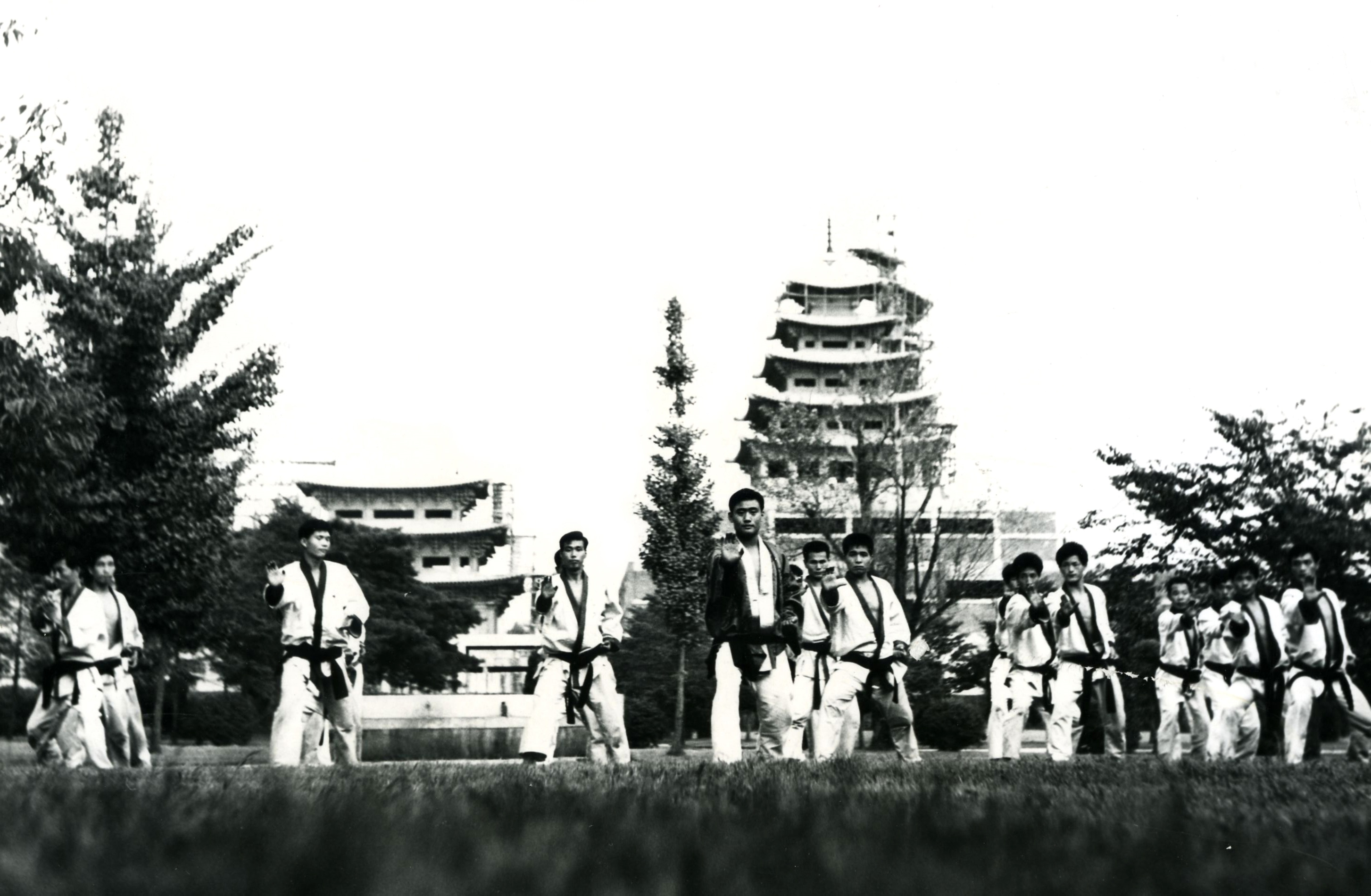
Your father and your uncle revived hwarangdo in Korea. Can you briefly tell us how?
When my grandfather returned to Korea after studying abroad in Japan in the 1940s, he befriended a Buddhist hermit monk, Venerable Suam Dosa, who was well-known for his martial art skills. My grandfather asked the monk to take care of his children, who were 4 and 5 then. The monk began teaching my father and his brother the martial art skills of hwarangdo passed down through generations. After almost 30 years of providing direct training, the monk granted my father the title of the 58th hwarang warrior and thus the responsibility to preserve and continue the knowledge and lineage of the hwarang.
My father, Lee Joobang, is credited as the founder of hwarangdo as he was the first to systemize all hwarang techniques into modern martial arts. He introduced this martial art to the public in the late 1950s and was officially recognized by the Korean government in 1960. Hence, he holds the title dojoonim (owner of the art), a position I am the heir to. He later founded World Hwa Rang Do Association.
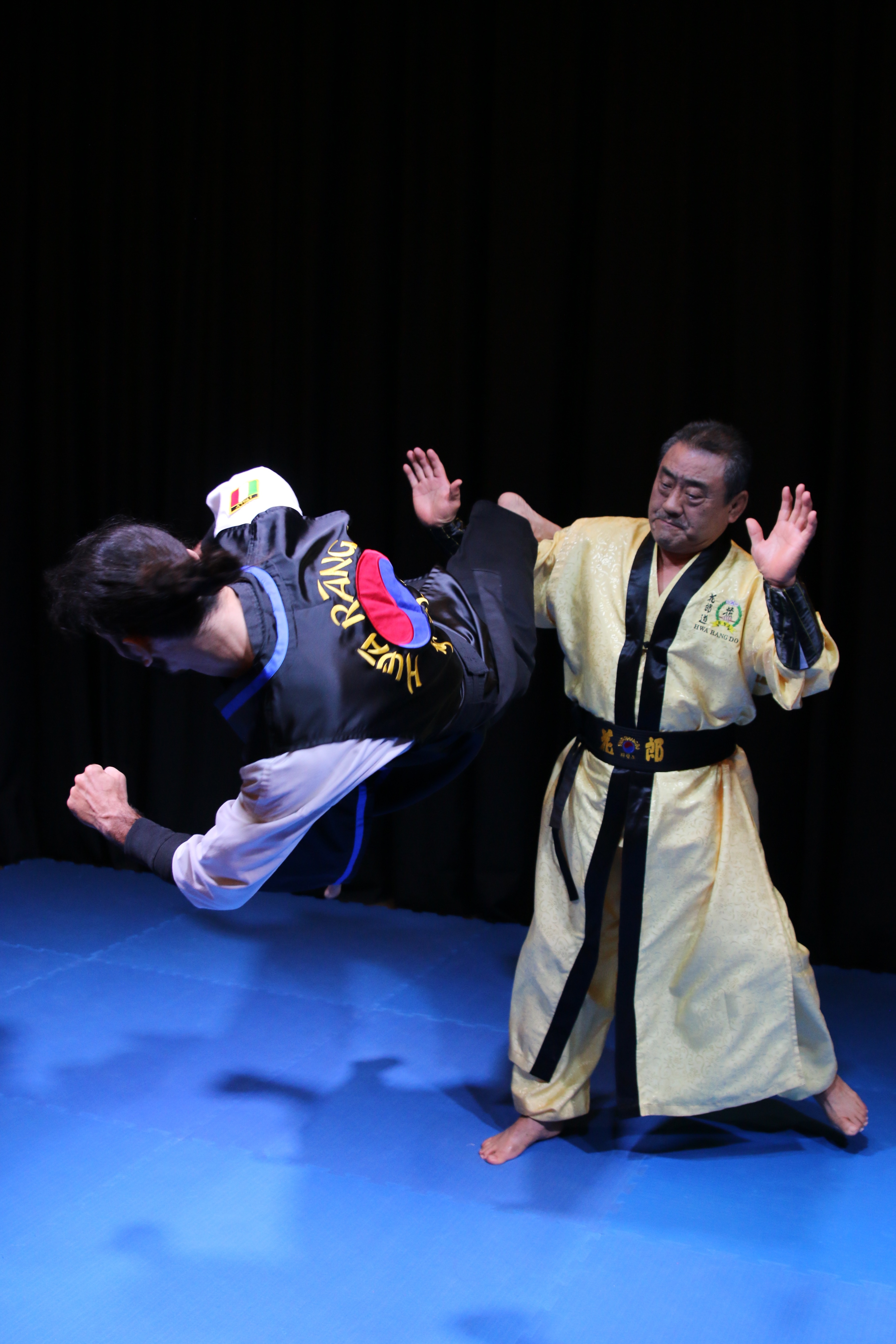
Hwarangdo founder Lee Joo-bang demonstrates a joint manipulation technique for an arrest. (Andrea Valtriani)
Did you know that you would inherit your father's position from the start?
No, I didn't. I promised my father that I would earn the position of heir to the foundation. He had always announced publicly that only the best master would become the heir. Though I was his son, I got no favoritism. I spent my life training and practicing on my own to prove to him my worthiness to become dojoonim.
Though I'm a grandmaster of hwarangdo, I always strive to improve what he built and work toward the fulfillment of his dream of creating a hwarangdo academy or sanctuary, where people can preserve the knowledge of the hwarang. Furthermore, I am committed to teaching and fostering the next dojoonim as well.
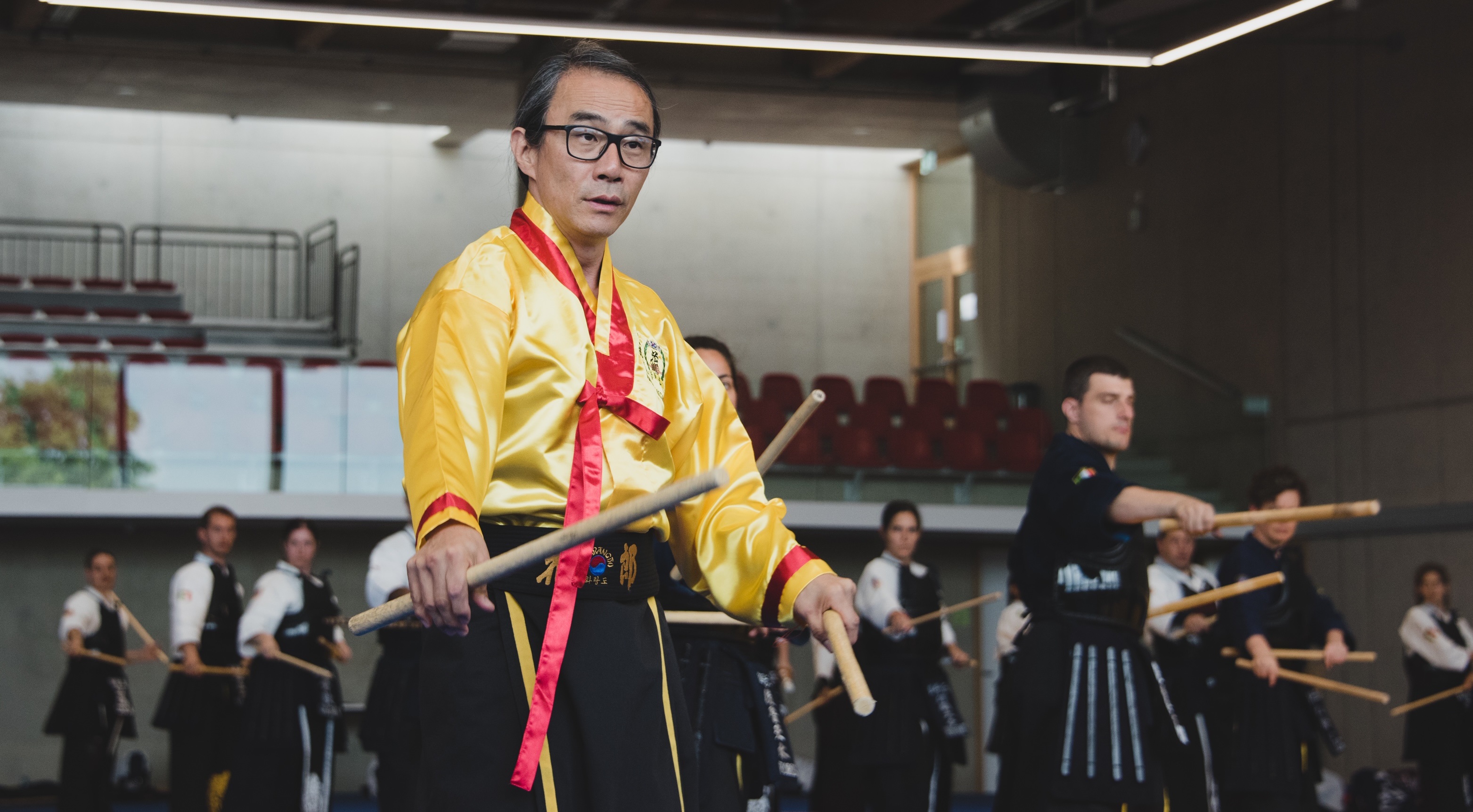
Grandmaster Lee Tae-joon conducts a seminar on gumtoogi, (sword fighting) during the WHRDA Annual Event in Luxembourg 2018. (Claire Davey)
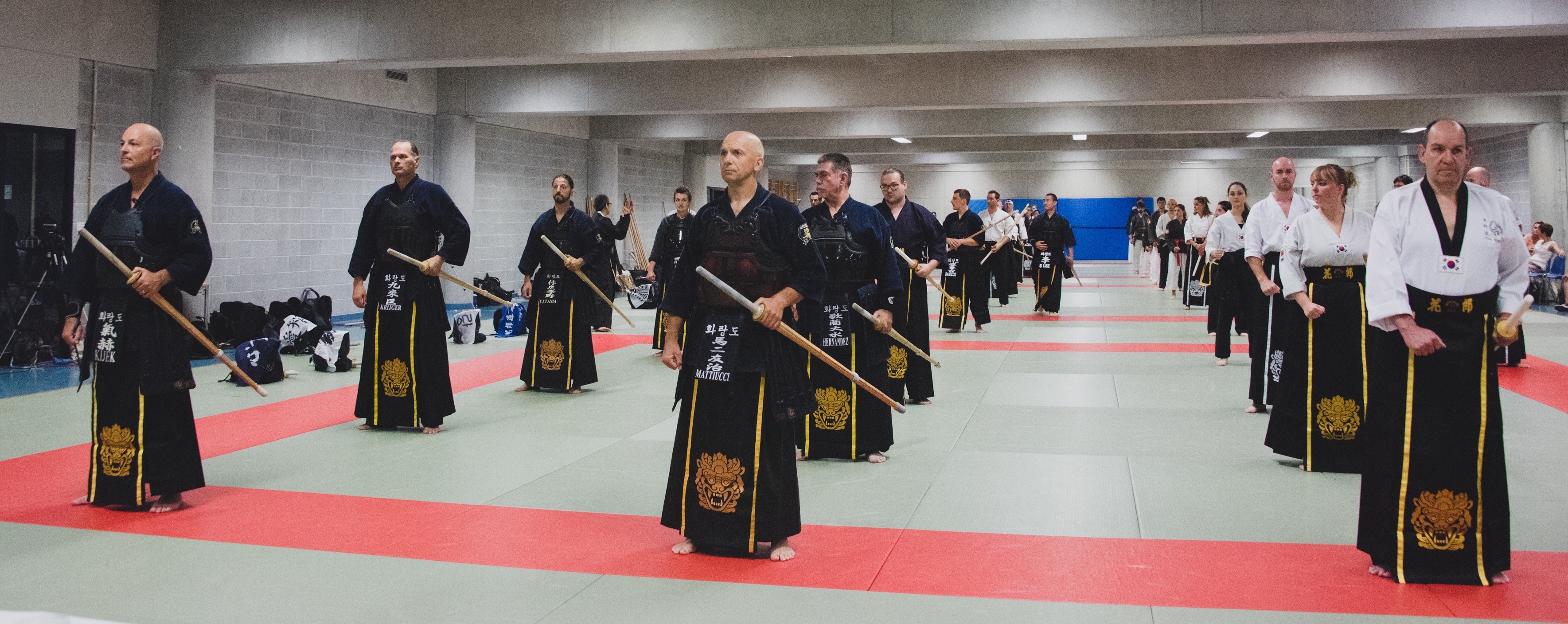
Participants attend a seminar on gumtoogi (sword fighting) during the WHRDA Annual Event in Luxembourg 2018. (Claire Davey)
What are your plans?
The World Hwa Rang Do Association is one of the world's few, if not the only, non-profit martial art organizations. Our mission is to spread a legacy of maintaining loyalty, relentlessly searching for the truth, empowering lives and serving humanity.
Keeping the mission in mind, my plan is to establish a school for potential hwarangdo masters and instructors in Luxembourg, the site of the association's European headquarters.
My ultimate goal is to set up hwarangdo academies to raise, educate and train orphans into world leaders as well as a live-in center for professional hwarang warriors like in ancient times. The centers were only for noble families back then but I want to accept everyone, including those abandoned by their families.

Grandmaster Lee Tae-joon poses with participants at a seminar on ssangbong (twin sticks) during the WHRDA Annual Event in Luxembourg 2018. (Claire Davey)
enny0611@korea.kr
*This article is written by a Korea.net Honorary Reporter. Our group of Honorary Reporters are from all around the world, and they share with Korea.net their love and passion for all things Korean.